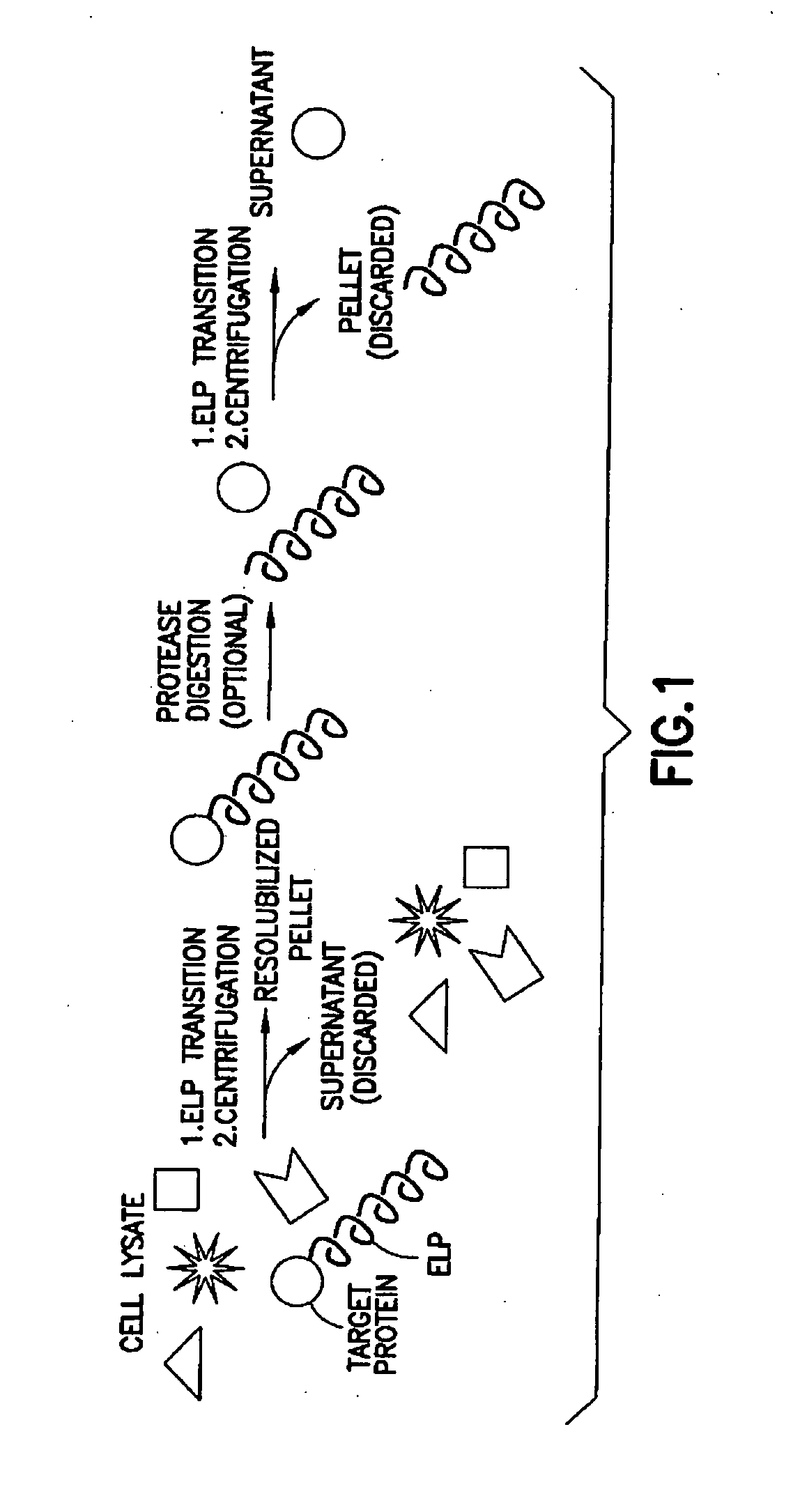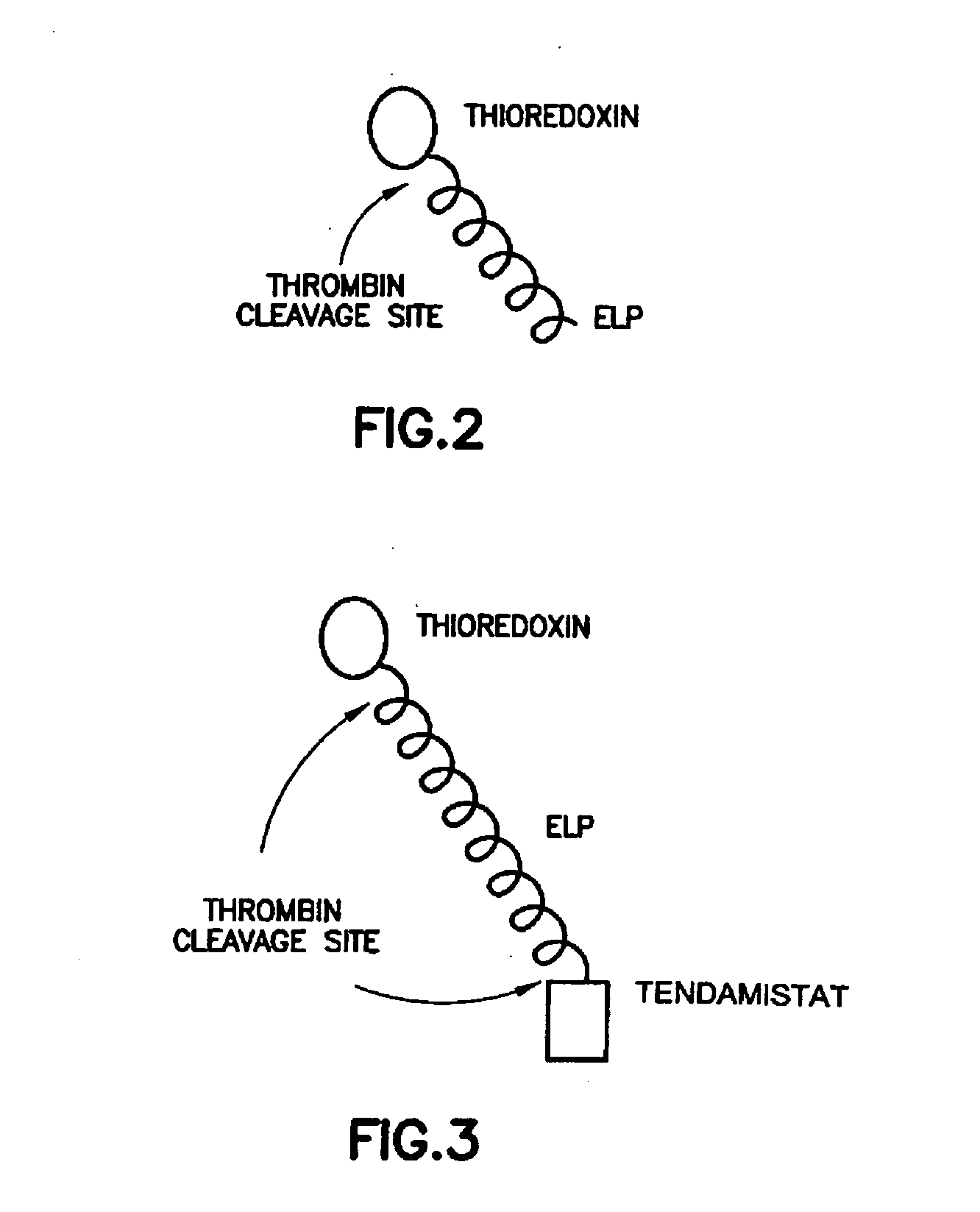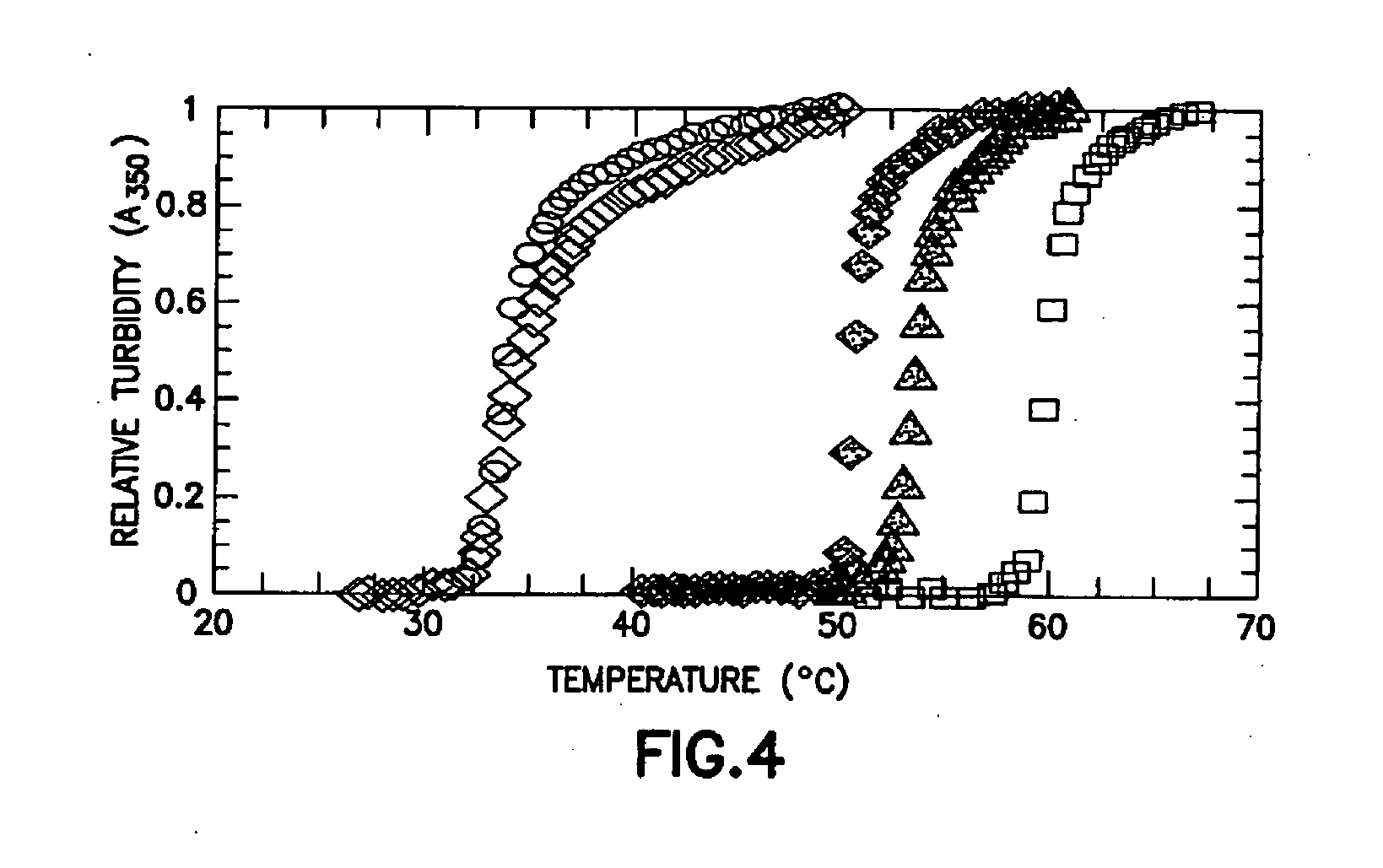Fusion peptides isolatable by phase transition
a fusion protein and phase transition technology, applied in the direction of peptides, enzymology, dna/rna fragmentation, etc., can solve the problems of chromatography scale-up, chromatography represents a major bottleneck, complex purification of recombinant proteins, etc., to achieve gentle separation and recovery conditions, easy scale-up, and elimination of chromatographic resins and equipmen
- Summary
- Abstract
- Description
- Claims
- Application Information
AI Technical Summary
Benefits of technology
Problems solved by technology
Method used
Image
Examples
example 1
Fusion Proteins Containing Thioredoxin and / or Tendamistat
[0243] Thioredoxin and tendamistat exemplify two limiting scenarios of protein expression: (1) the target protein over-expresses at high levels and is highly soluble (thioredoxin), and (2) the target protein is expressed largely as insoluble inclusion bodies (tendamistat). It is preferable that proteins representative of this second class exhibit some level of expression as soluble protein to be purified by inverse transition cycling.
[0244] The thioredoxin-ELP fusion protein exhibited only a small increase in Tt (1-2° C.) compared to free ELP, while the tendamistat fusion displayed a more dramatic 15° C. reduction in Tt. This shift was identical for both the ternary (thioredoxin-ELP-tendamistat) and binary (ELP-tendamistat) constructs, indicating that the Tt shift was associated specifically with tendamistat. These observations are consistent with the conclusion that the decreased Tt was due to interactions between the ELP c...
example 2
High-Throughput Purification of Recombinant Proteins Using ELP Tags
[0337] The gene for the 5-polypentapeptide VPGVG ELP sequence was constructed by annealing two 5′-phosphorylated synthetic oligonucleotides (Integrated DNA Technologies, Coralville, Iowa) to yield double stranded DNA with PflMI and HinDIII compatible ends. This gene was inserted into a PflMI / HinDIII linearized and dephosphorylated modified pUC-19 (New England Biolabs, Beverly, Mass.) vector and polymerized using recursive directional ligation with PflMI and Bgll (Meyer, 1999; Meyer, 2000) to generate the gene for the 20-polypentapeptide ELP sequence. This ELP gene was then excised with PflMI and Bgll, gel purified (QIAquick Gel Extraction Kit, Qiagen, Valencia, Calif.), and inserted into a SfiI linearized and dephosphorylated modified pET32b vector (Novagen, Madison, Wis.; Meyer, 1999). This expression vector was then transformed into the BLR(DE3) (Novagen) E. Coli expression strain.
[0338] The aforementioned cells ...
example 3
Construction of Various ELP Gene Expression Series
[0354] Bacterial Strains and Plasmids: Cloning steps were conducted in Escherichia coli strain XL I-Blue (recA1, endA1, gyrA96, thi-1, hsdr17 (rk−, mk+), supE44, relA1, lac[F′, proAB, lacIqZΔM15, Tn10 (Tetr)] (Stratagene La Jolla, Calif.). pUC19 (NEB, Beverly, Mass.) was used as the cloning vector the ELP construction (Meyer and Chilkoti, 1999). Modified forms of pET15b and pET24d vectors (Novagen) were used to express ELP and ELP-fusion proteins in BL21 Star (DE3) strain (F−, ompT, hsdSB (rB−mB−), gal, dcm, rne 131, (DE3)) (Invitrogen Carlsbed, Calif.) or BLR(DE3) (F−, ompT, hsdSB (rB−mB−), gal, dCm, Δ(srl-recA) 306::Tn10(TcR)(DE3)) (Novagen Madison, Wis.). Synthetic DNA oligos were purchased from Integrated DNA Technologies, Coralville, Iowa. All vector constructs were made using standard molecular biology protocols (Ausubel, et al., 1995).
Construction of ELP1 [V5A2G3] Gene Series
[0355] The ELP1 [V5A2G3] series designate polype...
PUM
 Login to View More
Login to View More Abstract
Description
Claims
Application Information
 Login to View More
Login to View More - R&D
- Intellectual Property
- Life Sciences
- Materials
- Tech Scout
- Unparalleled Data Quality
- Higher Quality Content
- 60% Fewer Hallucinations
Browse by: Latest US Patents, China's latest patents, Technical Efficacy Thesaurus, Application Domain, Technology Topic, Popular Technical Reports.
© 2025 PatSnap. All rights reserved.Legal|Privacy policy|Modern Slavery Act Transparency Statement|Sitemap|About US| Contact US: help@patsnap.com



